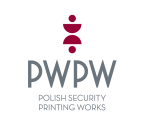| 97 years of PWPW’s history | |
| (25-01-2016) |





On 25 January 1919, the government formed by Ignacy Paderewski made a decision to establish an enterprise producing new Polish banknotes and documents. In consequence, National Graphic Facility (Państwowe Zakłady Graficzne) was created which was later transformed into Polish Security Printing Works (Polska Wytwórnia Papierów Wartościowych).
It was obvious for the then political elites that free Poland, which, after 123 years of partitions, regained independence only several weeks before, must have its own currency and must manufacture identity documents for its citizens within its own capacity. Social and economic development of the state was hindered by the fact that 6 different currencies were in circulation on the Polish territory after the end of the First World War, namely: Polish marks, tsarist rubles, ostmarks, Austrian crowns, hryvnias and karbovanets. Additionally, dollars, francs and British pounds were used for business settlements on a larger scale. For that reason, since the beginning of its existence, National Graphic Facility was to play a vital role for Poland. The company was intended to be different from other printing houses and facilities operating at that time.
- “During production of banknotes and all state fee stamps, the National Graphic Facility should use different types of features that would secure such stamps against counterfeiting and that would be top secret and accessible only to trusted people”, wrote in 1919 Józef Englich, the then Minster of Treasury.
However, before production could be launched at full speed, it was necessary to decide the name of the new Polish currency. However, in that matter, no common agreement could be reached, even at the highest political level. On 5 February 1919, Chief of State Józef Piłsudski issued a decree by virtue of which it was decided that “Lech” would be the new Polish currency and that “grosz” would be a hundredth part thereof. Yet, the name did not gain wider acceptance. During one of its first meetings, the Polish Sejm ( i.e. lower chamber of the Parliament) adopted an act that invalidated the Piłsudski’s decree and resolved that the new Polish currency would be called “złoty”.
After several years, National Printing Facility was transformed into a joint-stock company styled Polish Security Printing Works (Polska Wytwórnia Papierów Wartościowych). In 1926 construction of a new seat of the company located at Romana Sanguszki Street in Warsaw began. The building designed by Antoni Dygat was erected three years later in 1929. The building has remained the main seat of PWPW until today.
After 97 years, Polish Security Printing Works has become one of the most renowned brands in the security printing industry in Europe. Today, PWPW is a modern enterprise that employs almost 1800 people and that manufactures perfectly secured documents, banknotes, postage stamps, excise stamps, IT systems, i.e. all products that are required to meet highest quality and security standards.
Over the last decade, PWPW has managed to get a foothold in foreign markets and strengthened its position. Banknotes produced in Warsaw have been put into circulation in such countries as Guatemala, Paraguay, Honduras and Georgia. Polish Security Printing Works also provides biometric passports and electronic IDs to the citizens of Armenia. Overall, PWPW-branded products are present in Poland and in several dozens of other countries around the world.



